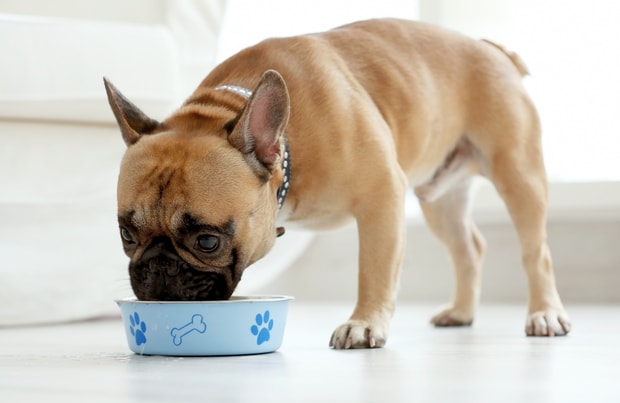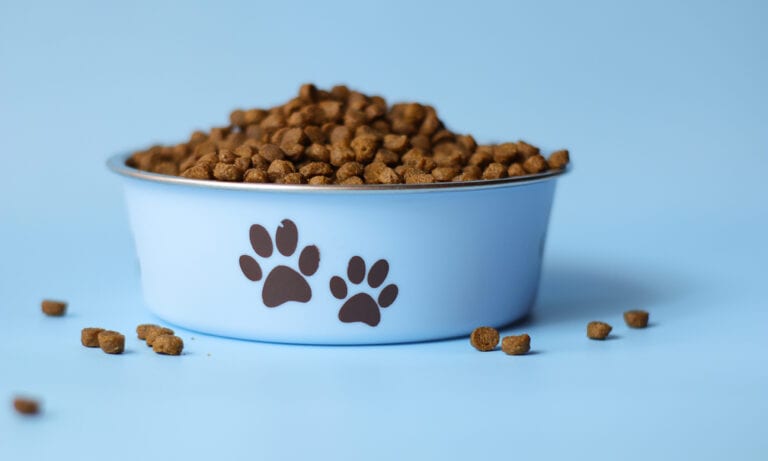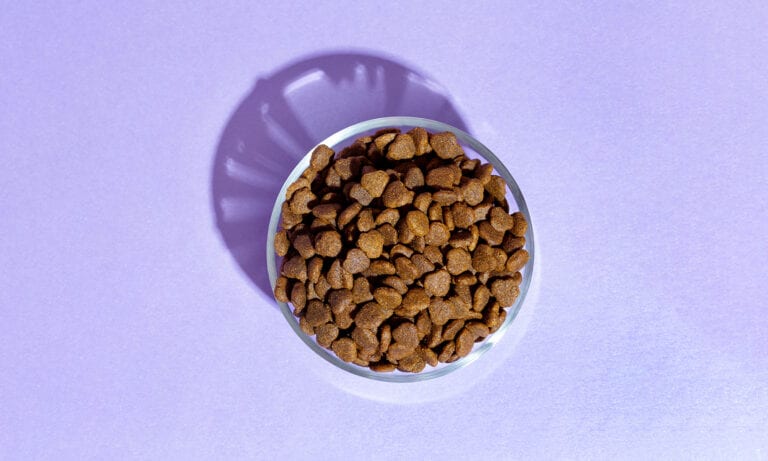When looking at the ingredients in commercial dog food, you’re bound to have some questions, including: “Why all the added colors? Is 21 percent crude protein enough for my dog? What are these items I can’t pronounce?”
It’s enough to make some pet parents wonder if they should cook up their own canine cuisine. Fortunately, making your own dog food is something you can do, but there’s much more to it than just making another dinner plate for your dog each evening.
“It has to be done the right way,” said Dr. Richard Goldstein, chief medical officer at the Animal Medical Center in New York City. “Our nutritional requirements are different than dogs’, especially when it comes to vitamins and minerals. We evolved eating very different things.”
While our ancestors were feasting on fruits, berries and maybe the occasional small game, dogs’ predecessors were devouring whole animals, skin, bones, organs and all, which means that making an extra plate of chicken and rice for your pup won’t cut it, said Dr. Judy Morgan, veterinarian and author of several books, including What’s For Dinner Dexter? Cooking For Your Dog Using Chinese Medicine Theory.
Before you venture down the DIY dog food path, it’s important to check with your veterinarian (bonus points if he or she specializes in nutrition) to ensure your recipes have all the necessary vitamins, minerals and nutrients your dog needs to maintain her health.
Don’t give your dog enough calcium, for example, and her body will start pulling it from her bones, said Morgan. “The body will do everything it can to keep itself in a steady state,” she added.
The Importance of “Complete and Balanced”
Dog food must be complete and balanced to provide your pup the necessary ingredients she needs to maintain proper health.
To make that hypothetical chicken and rice dinner suitable for your dog, you may have to add an ingredient like bone meal to boost the dish’s calcium content, as well as other items to ensure the dog gets enough vitamins and minerals, Goldstein said. Pet parents can add supplementary items individually or buy a pre-made vitamin and mineral mix to stir into the food.
Another key to a successful homemade dog diet is consistency. If you’re changing the food each day, it will be harder to ensure the meals are balanced, said Goldstein.
Morgan, takes a different approach, preferring to rotate things so that if there is an imbalance, it can be made up for somewhere else. Talk to your veterinarian about which option is best for your dog’s diet and your budget.
What Ingredients are Necessary for a Balanced Meal?
Commercial dog food typically contains a mix of protein, carbohydrates and high-fiber fruits and vegetables, as well as those critical vitamins and minerals.
Morgan, who cooks for her dogs, says she uses proteins like organ meat as well as sardines and eggs. “Eggs are the number one protein for digestibility and completeness,” she said. Cook all proteins fully before feeding them to your dog.
Carbohydrates in your dog’s diet can come from ingredients such as potatoes, pasta and rice.
“Brown rice is better than white rice from a Chinese medicine perspective,” Morgan said. “White rice will make inflammatory diseases worse.”
Barley is another carb option that’s good for diabetics, she said. Quinoa is also good; though some dogs may find it hard to digest.
The ratio of meat to carbs will vary based on the recommendations of your veterinarian, who will take into account factors like your pup’s weight, activity level and age (a dog who needs need to lose weight may need less carbs than a skinny pup).
For vegetables, Morgan uses pumpkin, squash and other high-fiber produce, as well as pears, apples and blueberries. Like humans, dogs with bladder issues can benefit from cranberries, she said. Just avoid onions, garlic, grapes and raisins, which can be toxic to your dog. Fruits and vegetables should be cooked in order for your dog to get all of their nutritional benefits.
Morgan also likes to add ground eggshells to make sure there is enough calcium and trace minerals her dog’s food. She also adds whole eggs for a vitamin D boost.
She says it takes about three hours each month to prepare enough food for her nine dogs. On cooking day, she’ll have multiple crockpots going and several pans warming in the oven. Again, it’s vital to ensure the food is tailored to your dog’s health and nutritional needs.
“Be wary of recipes you find online,” Goldstein said. “What’s good for one dog is not good for the rest.”
Feeding and Storing Homemade Dog Food
Most dogs like to be fed twice a day, Goldstein said, and keeping your homemade meals balanced by ensuring there is enough fat, protein and carbs will prevent them from going hungry in between meals.
Just be careful with grazers. While many commercial dog foods have preservatives to help keep the food fresh-tasting, that fresh salmon you just served Fido won’t keep in her dish for long.
“If you wouldn’t eat it after being outside the fridge for four to six hours, I wouldn’t feed it to your dog either,” Goldstein said.
Morgan keeps her homemade food in the fridge for three to four days before moving it to the freezer, but serves the final product at room temperature.
Morgan said she’s seen dogs on death’s door experience remarkable recoveries thanks to a properly-tailored diet.
“It really makes a difference when you’re using whole foods versus processed chemicals,” she said. “It’s a totally different outcome.”

Helen Anne Travis is a freelance writer based in Tampa, FL. She also writes for CNN, The Guardian and The Globe and Mail.
Share:









